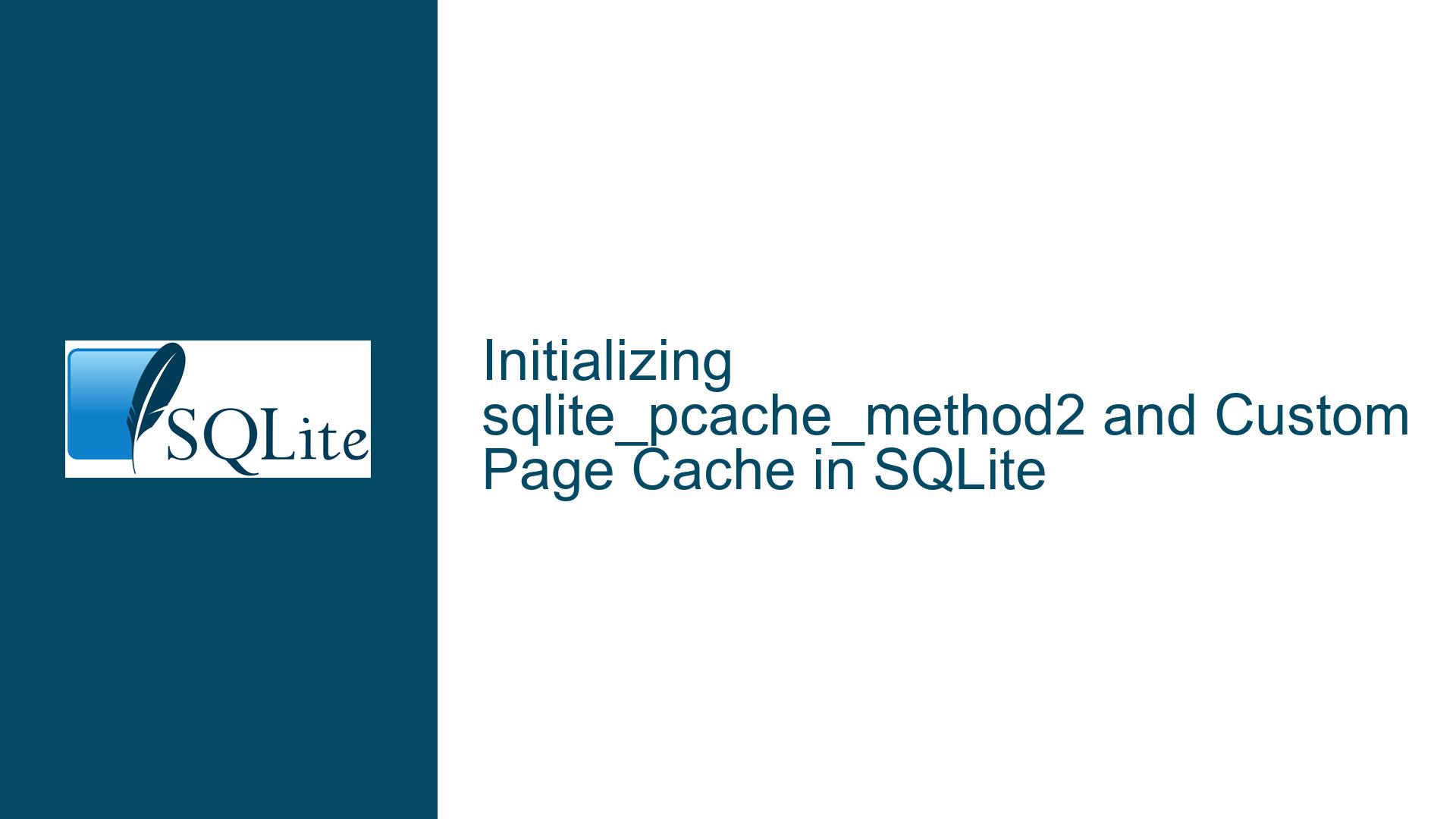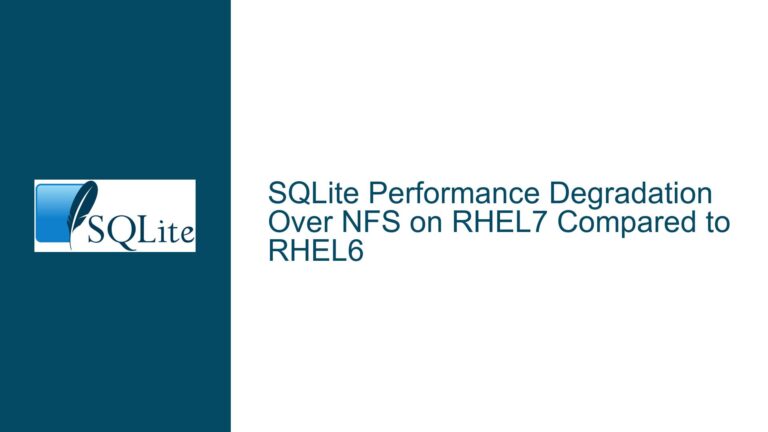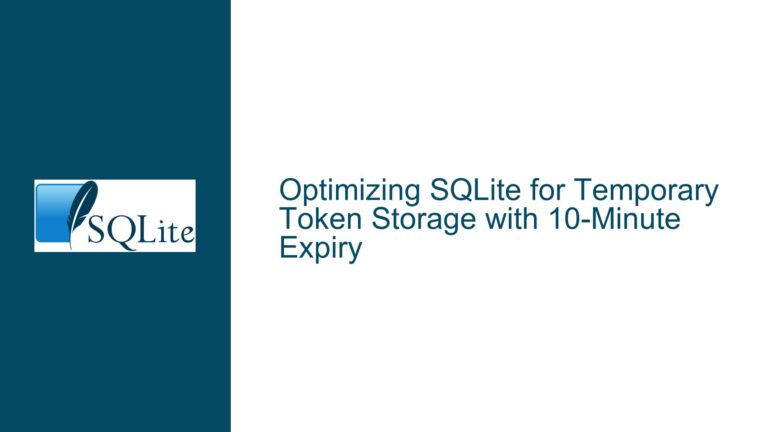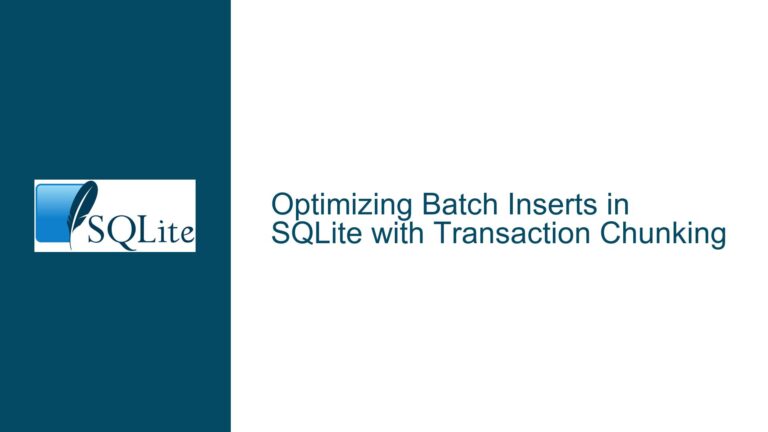Initializing sqlite_pcache_method2 and Custom Page Cache in SQLite
Understanding sqlite_pcache_method2 and Custom Page Cache Initialization
The sqlite_pcache_method2 structure in SQLite is a critical component for implementing a custom page cache mechanism. SQLite’s default page cache is efficient and handles most use cases, but there are scenarios where a custom page cache implementation is necessary, such as when you need fine-grained control over memory management, specialized caching strategies, or integration with custom memory allocators. The sqlite_pcache_method2 structure defines the interface for a custom page cache implementation, and initializing it correctly is essential for ensuring that SQLite can interact with your custom cache effectively.
The sqlite_pcache_method2 structure contains several function pointers that SQLite will call to manage the page cache. These functions include operations for creating and destroying cache objects, fetching and releasing pages, and managing the cache’s memory footprint. To initialize this structure, you must provide implementations for all the required functions and assign their addresses to the corresponding members of the structure. Once the structure is initialized, you can configure SQLite to use your custom page cache by calling sqlite3_config with the appropriate parameters.
Challenges in Initializing sqlite_pcache_method2 and Configuring Custom Page Cache
One of the primary challenges in initializing the sqlite_pcache_method2 structure is ensuring that all function pointers are correctly assigned and that the corresponding functions adhere to the expected behavior. Each function in the structure has a specific role, and any deviation from the expected behavior can lead to undefined behavior, memory leaks, or crashes. Additionally, the initialization process requires a deep understanding of SQLite’s internal page cache management, as well as the memory allocation and deallocation strategies used by the database engine.
Another challenge is configuring SQLite to use the custom page cache. This involves calling sqlite3_config with the appropriate parameters, which can be error-prone if not done correctly. The configuration process must be performed before any database connections are established, as SQLite’s page cache configuration is global and affects all subsequent connections. Furthermore, the custom page cache implementation must be thread-safe if SQLite is used in a multi-threaded environment, adding another layer of complexity to the implementation.
Step-by-Step Guide to Initializing sqlite_pcache_method2 and Configuring Custom Page Cache
To initialize the sqlite_pcache_method2 structure and configure SQLite to use a custom page cache, follow these steps:
Define the Required Functions: The
sqlite_pcache_method2structure requires implementations for several functions, includingxInit,xShutdown,xCreate,xCachesize,xPagecount,xFetch,xUnpin,xRekey,xTruncate, andxDestroy. Each of these functions must be implemented to handle the corresponding page cache operations. For example, thexFetchfunction is responsible for fetching a page from the cache, while thexUnpinfunction is used to release a page back to the cache.Initialize the sqlite_pcache_method2 Structure: Once the required functions are implemented, you need to initialize the
sqlite_pcache_method2structure by assigning the addresses of these functions to the corresponding members of the structure. For example, if you have implemented a function namedmy_xFetchto handle page fetching, you would assign its address to thexFetchmember of the structure.Configure SQLite to Use the Custom Page Cache: After initializing the
sqlite_pcache_method2structure, you need to configure SQLite to use your custom page cache. This is done by calling thesqlite3_configfunction with theSQLITE_CONFIG_PCACHE2option and passing a pointer to your initializedsqlite_pcache_method2structure. This configuration must be performed before any database connections are established.Test the Custom Page Cache Implementation: Once the custom page cache is configured, it is essential to thoroughly test the implementation to ensure that it behaves as expected. This includes testing various scenarios, such as cache hits and misses, memory allocation and deallocation, and thread safety in multi-threaded environments. Any issues discovered during testing should be addressed before deploying the custom page cache in a production environment.
Optimize the Custom Page Cache: After the initial implementation and testing, you may need to optimize the custom page cache for better performance. This could involve tuning the cache size, adjusting the eviction policy, or optimizing the memory allocation strategy. Profiling tools can be used to identify performance bottlenecks and guide the optimization process.
By following these steps, you can successfully initialize the sqlite_pcache_method2 structure and configure SQLite to use a custom page cache. This process requires a deep understanding of SQLite’s internal mechanisms and careful attention to detail, but it can provide significant benefits in terms of performance and control over the database’s memory management.






